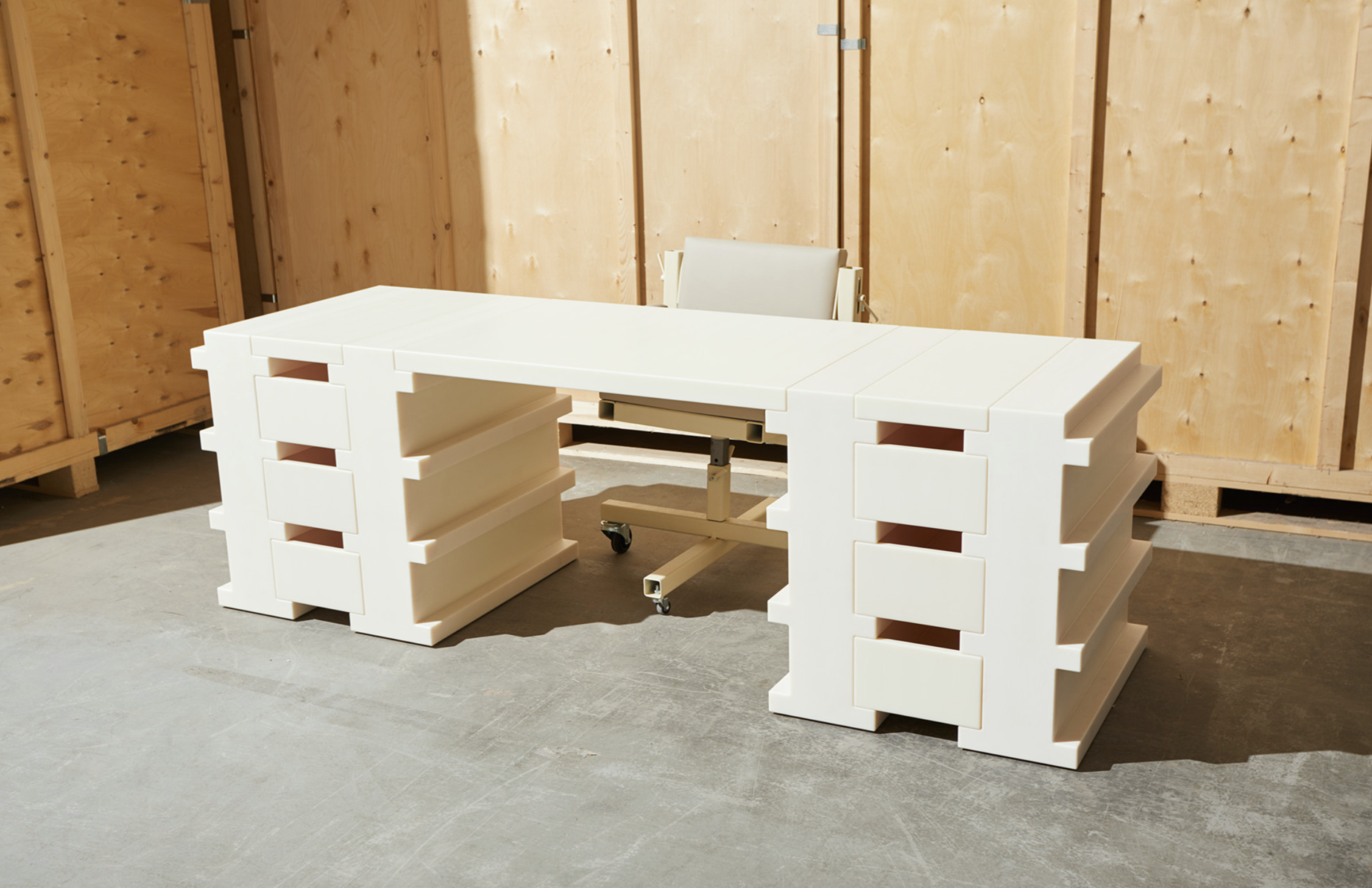Parts and Wholes
“There is an objectivity,” Donald Judd wrote in his landmark essay Specific Objects, “to the obdurate identity of a material.” As complex a sculptural thinker as there has been, he nonetheless remained dedicated to clarity of material expression – operating on the principle that a work is strongest if it presents itself as just one thing, integral, not reducible to parts. Judd committed himself more fully to these material conditions than any artist of his time. In another sense, though, he was applying principles that are commonplace in design – internal consistency makes a form better, stronger, and more coherent – and he applied it in his furniture, just as in his sculpture.
In the three works here, we have a full spectrum of attitudes toward this precept. Judd’s table is nothing more (but also, nothing less) than a structure organized in a series of ratios, horizontals and verticals locked together in a single, shared logic. Move anything a centimeter, and the object would be substantially other than what it is. Philippe Malouin’s desk in nylon approaches this same degree of rigor, and even features vertical construction reminiscent of Judd’s well-known “stacks.” Malouin has taken advantage of an unusual property of self-lubricating nylon – it glides smoothly against itself – to set the sliding drawers within the desk’s vertical posts. Clever as this definitely is, it takes an incremental step away from the gestalt by virtue of its mechanical, kinetic action – there are indeed parts here, albeit ones that work beautifully together.
DNA is a collaborative essay project, intertwining three gallery programs into a single, generative presentation.





